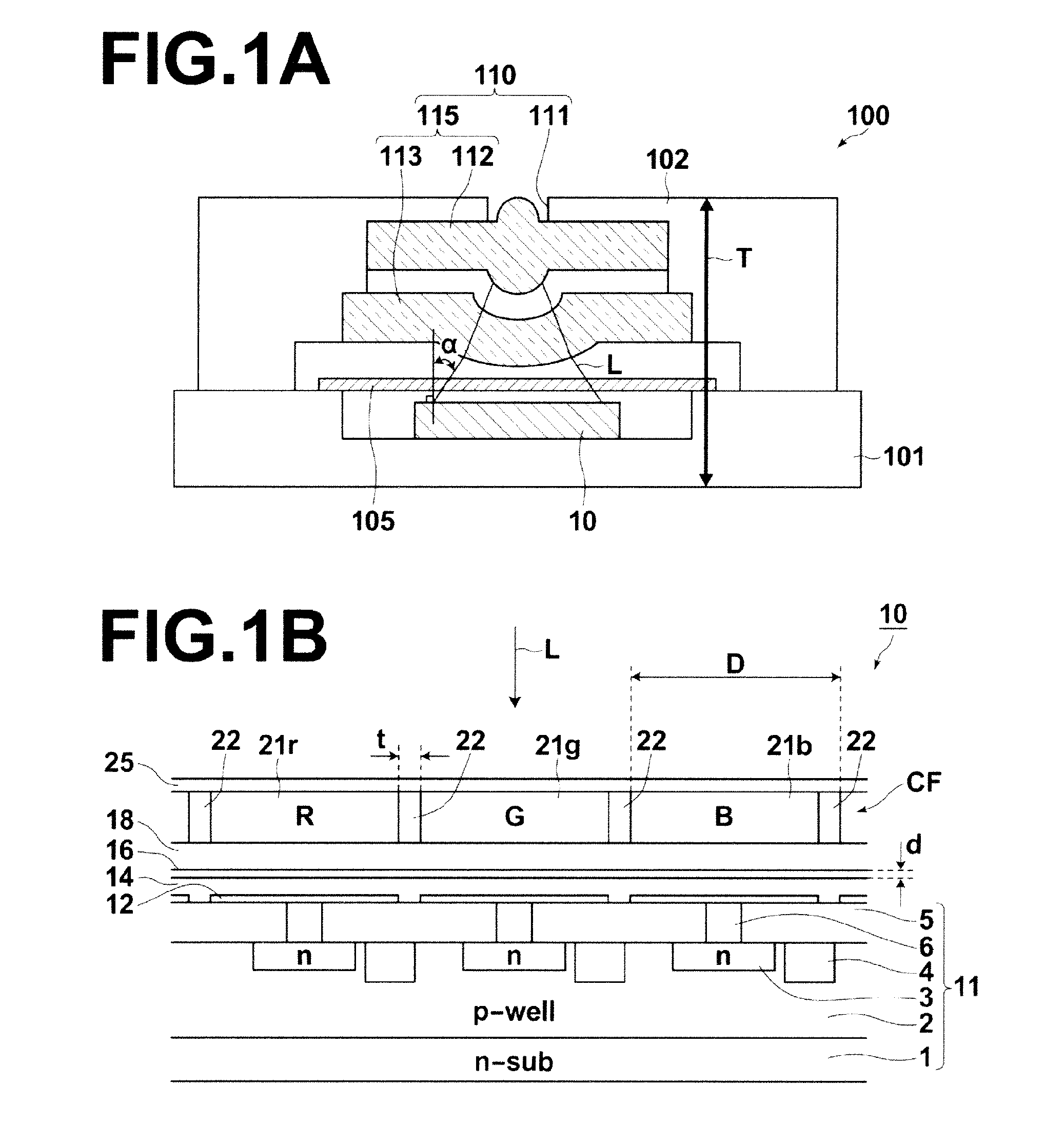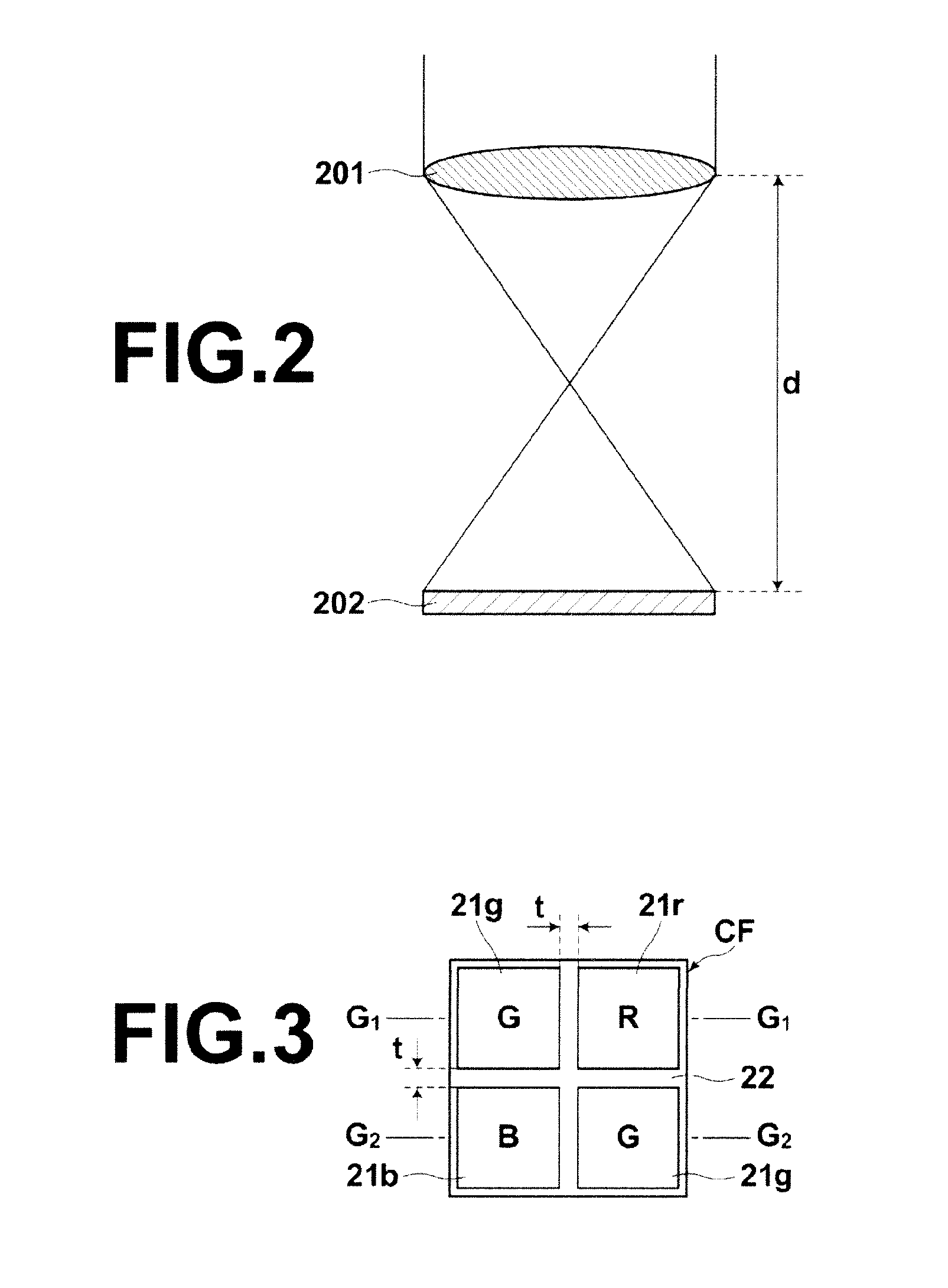Imaging apparatus
a technology of imaging apparatus and lens group, which is applied in the field of imaging apparatus, can solve the problems of insufficient consideration and insufficient consideration of imaging devices, and achieve the effects of reducing the thickness of the apparatus, reducing the overall optical length of the lens group, and reducing the cross-talk between adjacent pixels
- Summary
- Abstract
- Description
- Claims
- Application Information
AI Technical Summary
Benefits of technology
Problems solved by technology
Method used
Image
Examples
Embodiment Construction
[0039]An imaging apparatus according to an embodiment of the present invention will now be described. FIG. 1A is a schematic cross-sectional view of an imaging apparatus according to an embodiment of the present invention, illustrating a structure thereof, and FIG. 1B is a schematic partial cross-sectional view of a solid-state image sensor provided in the imaging apparatus.
[0040]As illustrated in FIG. 1A, the imaging apparatus 100 includes a solid-state image sensor 10 incorporated in a ceramic package 101, and lenses 112, 113 fixedly disposed in a lens holder 102 having an aperture stop 111 so as to form an image on a surface (light receiving surface) of the solid-state image sensor 10, in which the ceramic package 101 and lens holder 102 are combined. An infrared light cut filter 105 is provided between a lens group of the lenses 112, 113 and solid-state image sensor 10. Here, an imaging optical system 110 is formed by the aperture stop 111 and lens group 115.
[0041]As illustrated...
PUM
 Login to View More
Login to View More Abstract
Description
Claims
Application Information
 Login to View More
Login to View More - R&D
- Intellectual Property
- Life Sciences
- Materials
- Tech Scout
- Unparalleled Data Quality
- Higher Quality Content
- 60% Fewer Hallucinations
Browse by: Latest US Patents, China's latest patents, Technical Efficacy Thesaurus, Application Domain, Technology Topic, Popular Technical Reports.
© 2025 PatSnap. All rights reserved.Legal|Privacy policy|Modern Slavery Act Transparency Statement|Sitemap|About US| Contact US: help@patsnap.com



